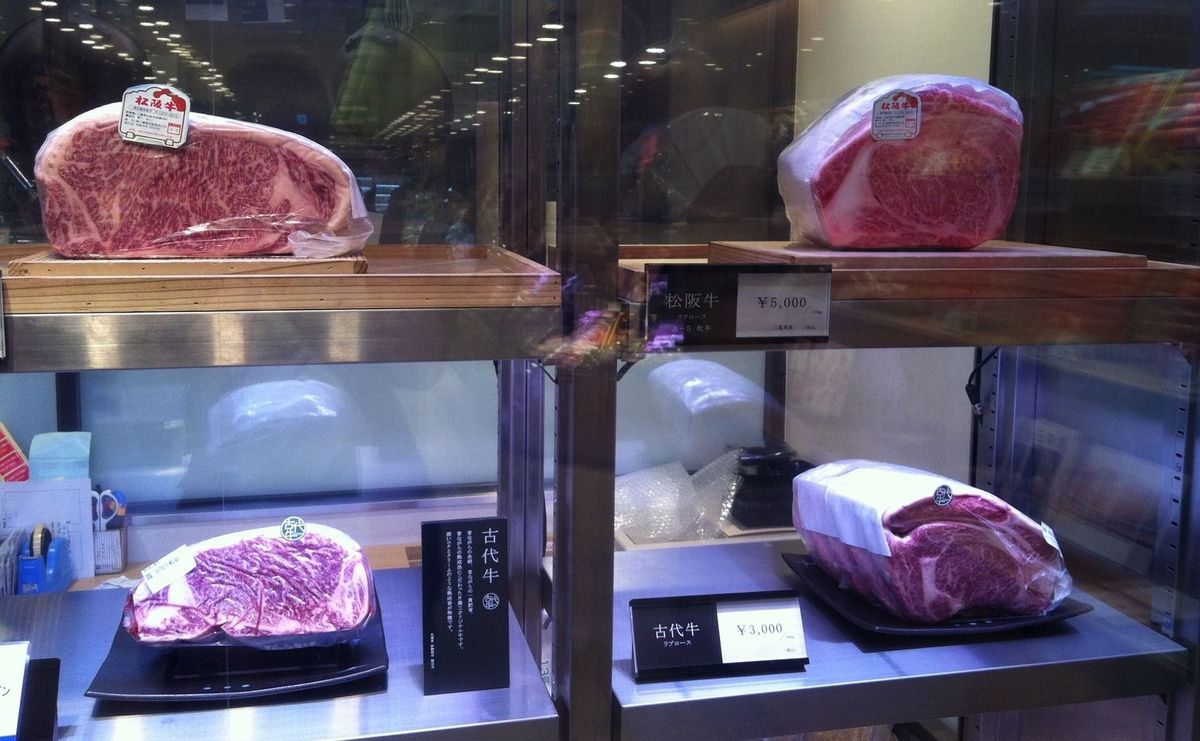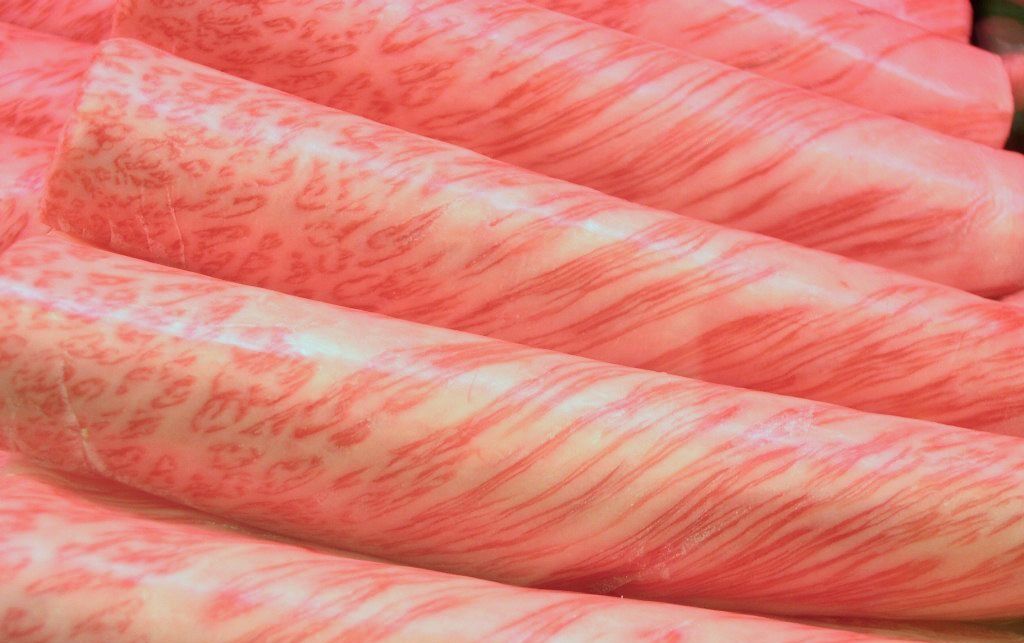Understanding Kobe Beef: A Comprehensive Guide
Kobe beef's exclusivity is rooted in rigorous standards, reserving the prestigious label for elite Tajima-gyu cattle. Let's delve into why these criteria are so strict and how they justify the premium price of this culinary treasure.

The term "compromise" finds no room in the realm of Kobe beef. While Kobe beef is a distinguished type of Wagyu, the reverse is not always true. Kobe stands apart, reserved exclusively for the crème de la crème of the Tajima-gyu lineage.
To don the coveted Kobe label, a Tajima-gyu carcass must pass through a rigorous selection process defined by the Kobe Beef Marketing and Distribution Promotion Association.
This ensures that only the pinnacle of quality is recognized as true Kobe beef, maintaining its illustrious reputation.
What is Kobe Beef?
Kobe beef is a premium cut of meat hailed from the Tajima-gyu breed of Wagyu cattle, which are raised in the mountainous and isolated terrain of Japan's Hyōgo Prefecture, where Kobe is the administrative hub.
The lineage of these cattle, once used in the rice paddies of ancient Japan, has been meticulously preserved. Kobe beef is revered for its intense marbling and rich flavor—a result of stringent raising standards that few cattle meet.
The exclusivity and rigorous certification process of Kobe beef not only underscore its luxurious status but also justify its high price, making it a celebrated choice among gastronomic enthusiasts for its succulent texture and unparalleled taste.
History Of Kobe Beef
Kobe beef's history is rooted in Japan's agricultural past, specifically within the Hyōgo Prefecture, where the Tajima-gyu cattle breed was first used for rice cultivation around the 2nd century.
Over time, these cattle became isolated due to Japan's mountainous geography, leading to a unique lineage known for their high-quality meat.
The term 'Kobe beef' only applies to meat from purebred Tajima-gyu cattle that meet strict criteria, a standard that began to be meticulously enforced in the late 20th century.
While the exceptional quality of Kobe beef has been cherished in Japan for centuries, it vaulted to international fame in the 1980s and 1990s, captivating gourmets worldwide with its extraordinary tenderness and flavorful marbling.
This rise to global prominence has cemented Kobe beef as a symbol of culinary luxury.
Wagyu vs. Kobe Beef
Wagyu refers to the collective breeds of cattle originating from Japan; it's a generic term for Japanese beef and is not indicative of any specific breed or quality standard.
There are four main breeds classified as Wagyu: Japanese Black, Japanese Brown, Japanese Poll, and Japanese Shorthorn. Kobe beef, a renowned type of Wagyu, is produced exclusively from the Japanese Black breed, particularly the Tajima-gyu lineage.
However, not all Tajima-gyu meat can be called Kobe beef; it must meet precise lineage and marbling standards.
While Kobe is within the Wagyu category, it represents a minuscule segment—about 5,000 heads are certified annually, accounting for just 0.06% of beef consumed in Japan, with only a small portion reaching international markets.
The Kobe Beef Diet: Beyond Grass-Feeding
Kobe beef cattle are raised on a regimen that eschews traditional pasture grass. Instead, their diet includes dried forage grasses, rice straw, soybeans, corn, barley, wheat bran, and nutrient-packed feed supplements, according to the Kobe Beef Marketing & Distribution Promotion Association
This diet, combined with ample time—over 30 months compared to the 16 to 18 months for typical U.S. beef—is what cultivates their highly marbled, flavorful fat.
Unlike the accelerated fattening in U.S. feedlots, Kobe beef's slow feeding process is key to its exceptional taste and texture.

Kobe Beef Fat: Sublime Melting Quality
The unique composition of Kobe beef fat, rich in monounsaturated fatty acids, allows it to melt at just 77 degrees Fahrenheit, lower than the human body temperature.
This results in a melt-in-your-mouth sensation unlike the chewier fat of regular beef, which begins to render at 130 to 140 degrees.
Kobe beef's fat is intricately marbled throughout, not just on top, enhancing the meat with a sumptuous, buttery taste and texture that elevates it above other steaks.
Authentic Kobe Beef Requirement
- Breeding: Calves must be of the Tajima cattle lineage, born at designated breeding farms in Hyogo Prefecture, registered, and tagged with a 10-digit individual ID number to track their pure lineage.
- Feeding: After being shown in the calf livestock market, the calves are then bought by designated feeding farms where they are raised on a diet of the finest feed—rice straw, maize, barley, and other cereals—and provided with clean water. This continues until they reach the ideal age for quality and texture, typically around 28 to 32 months.
- Slaughtering and Shipment: The cattle are slaughtered at approved slaughterhouses in Hyogo Prefecture, inspected, and if they meet the standards, are labeled as "Tajima Beef".
- Grading: Only Tajima heifers or steers that achieve a carcass grading of BMS No.6 or higher, a yield score of A or B, and a gross carcass weight of 499.9 kg or less, along with fine meat texture and excellent firmness, can be sold as Kobe Beef.
How Much Authentic Kobe Beef Cost in U.S?
Authentic Japanese Kobe beef in the United States at high-end restaurant, a Kobe beef dish typically costs $400 to $500 per plate.
In Hyogo Prefecture, where Kobe beef originates, prices range from $120 to $200 per pound, representing the lowest cost globally for this luxurious meat.
Top Spots for Kobe Beef in Kobe, Japan
In Kobe, a city famed for its namesake beef, culinary enthusiasts can savor this delicacy at revered establishments:
- Mouriya: A celebrated spot offering the finest grades of Wagyu, A4 and A5, with a live culinary performance. Economical options are available, and with five branches, reservations are recommended due to high demand.
- Tor Road Steak Aoyama: With over half a century's legacy, this family-operated gem is renowned for exceptional Kobe beef and meticulous service, complete with English-speaking staff.
- Aragawa Hyogo: An award-winning venue known for its Western cuisine with a Japanese twist, Aragawa curates top-tier Kobe beef and exquisite seafood, suitable for those not constrained by budget.
Beef of the Highest Quality and Price on the Global Stage
Miyazaki beef, another exceptional variety of Wagyu, is sometimes viewed as surpassing even Matsusaka beef in quality. It's won Japan's "Wagyu Olympics" multiple times, celebrated for its texture and taste.
When considering the hierarchy of luxurious beef, Miyazaki beef often stands alongside Matsusaka beef at the pinnacle of Japanese Wagyu, both outshining Kobe in specific culinary circles.
This places both Miyazaki and Matsusaka beef at the zenith of gourmet meats, with the French vintage beef holding the global top spot in price.
Here, a butcher employs a specialized hibernation technique, using intense cold winds to age the Blonde Aquitaine beef, allowing it to be preserved indefinitely without quality degradation.
A 2000 cote de boeuf vintage rib steak from this process can command a price of approximately $3,200.


